“Jig boring creates precision holes in parts with a high-level surface finish on different metals and alloys for automotive, medical, aerospace, electronics, and other industrial components”
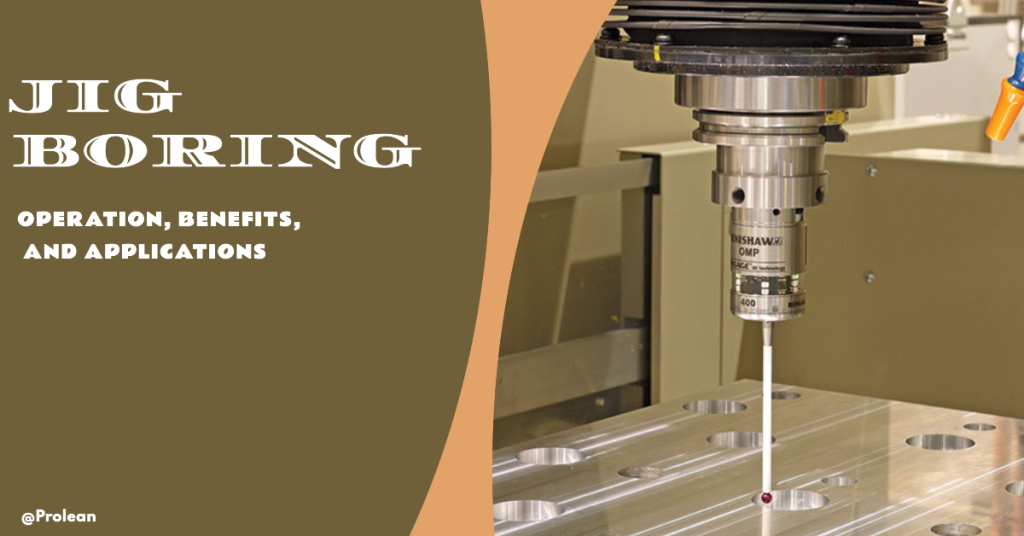
Boring refers to refining the drilled holes to highly accurate holes with various shapes and sizes, with tolerance as low as ± 0.001″. Similarly, jig boring is a precision boring machining process for accurately enlarging holes and producing precise spacing using a jig borer or jig boring machine. It uses a boring tool called a jig bore that can enlarge the holes with slow milling. Additionally, the boring features include high precision for hole sizes, accurate alignment of holes, and fine-tuning capabilities, making it suitable for various applications, from aerospace to tool and die-making.
Furthermore, we will discuss what is jig boring, jig boring machines & tools, its advantages, and its comparison with standard CNC mill boring.
What is Jig Boring?
Jig boring is similar to milling or CNC boring; a boring tool rotates and exacts the diameter of the bore. The main difference or characteristic of the jig boring process is its accuracy. It can achieve tighter tolerances and consistency throughout the machining batches. Therefore, jig bores are popular for applications requiring tight precision, complex hole patterns or shapes, and accurate alignments with other assembly parts. For example, they accurately drill holes in aircraft engine components.
Some product development projects require extreme precision to test the functionality, such as surgical tool manufacturing for the medical industry. In those cases, jig bore machines are used for precision boring.
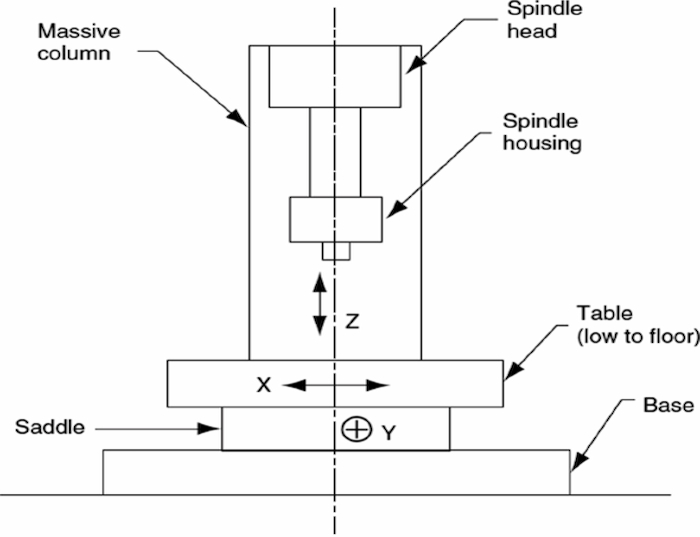
Jig boring mechanism
Furthermore, there are two types of jig-boring processes, Horizontal and vertical, based on the spindle orientation. Vertical jig boring uses a vertical spindle orientation and is suitable for boring into flat surfaces. On the other hand, horizontal boring involves a horizontal spindle orientation and is ideal for boring into the sides of the workpiece. It provides easier access to difficult-to-reach areas and larger workpieces.
How Does It Achieve Precision of 2 µm?
The Jig bore operations can easily achieve the precision of 2 µm. The reason behind this capability is how jig boring works. After securely clamping the workpiece, the precision spindle rotates the tool to remove the material. The machine allows for exact positioning and movement. As a result, it can ensure precise hole sizes and accurate spacing.
Related: Boring Vs. Drilling: Processes, Differences, and Applications
Try Prolean Now!
Jig Borer vs Milling Machine: Are They Same?
Besides accuracy, there are other fundamental differences between the jig borer and the milling machine. Although the milling machine can also bore holes with boring bars and tools, it is not specialized for boring applications. On the other hand, a jig boring machine is specialized equipment for boring operations; it does not perform any other side machining operations.

Jig borer machine
If we look at the construction of a jig borer vs milling machine, the optical scale in a jig borer provides precise measurement. It gives feedback to the system to adjust it for better tolerances. The table below shows the fundamental differences between a milling machine and a jig borer.
Table: Jig Borer Vs. Milling Machine
| Component | Jig Borer | Milling Machine |
| Boring/Milling Head | A custom & precise boring head for accurate hole placement | Versatile heads for end milling, face milling, and drilling |
| Spindle Bearings | Precision bearings to minimize runout and ensure smooth rotation | Durable bearings suitable for various speeds and loads |
| Optical Scales | Provides precise measurement and feedback on the position of the table and spindle | There is no Optical scale in a typical milling machine |
| Feed Mechanisms | Fine-feed mechanisms for minute adjustments | Lead screws and nuts based on required precision and load capacity |
| Control Panel | Dials and handwheels for manual machines; advanced control interfaces for CNC | Advanced interfaces for CNC Programming. |
| Workholding Devices | Precision vices, clamps, and fixtures to hold workpieces | Vices, clamps, and fixtures are designed with adaptability for various sizes |
Additionally, the fine adjustment features of jig-boring machining tools and optical scales are two features contributing to the high accuracy of jig boring. On the other hand, the CNC milling machine uses general boring tools like end mills, boring bars, and drill bits.
Jig Boring Applications
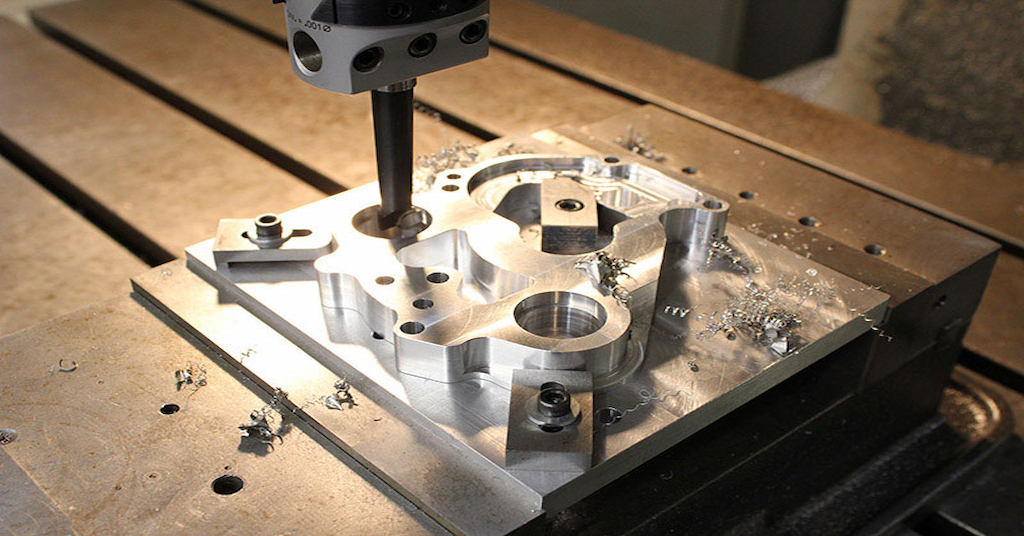
Jig boring application
As previously said, the jig boring process creates precise holes in various types of workpieces. It is almost mandatory to use jig boring if precision affects the functionality and performance of manufactured parts, such as holes with accurate center-to-center distances, high-finish hole surfaces, hard-to-reach or accessible areas, etc.
Here are the jig boring application examples;
Aerospace Components
A jig bore is used in aerospace to create holes in various components, precise bores for structural alignment, center-to-center accurate holes, turbine blades, holes in landing gear components for mechanical linkage, etc.
Automotive Parts
Holes are critical features of various automotive parts, and their accuracy and consistency heavily affect the assembly process. Therefore, jig boring process is used to bore the holes in engine blocks for cylinder liners & head bolts, transmission housing, holes in chassis components for suspension and steering linkages, etc.
Medical Industry
High-quality finish, accuracy, and hygiene are all essential for medical safety. Meanwhile, jig boring can address all of these requirements. A jig bore can create holes with excellent surface finishing in surgical instruments. It drills holes in orthopedic implants like hip and knee replacements. Other applications include dental drills, diagnostic equipment, prosthetics, etc.
Die and Mold
The die for casting or extrusion and mold for injection or compression molding manufacturing always involves jig-boring operations to create deep & narrow cavities, precise holds, pockets, etc. As the mold or die finish quality and precision directly impact the production, it is essential to leverage jig boring precision capability.
Electronics Industry
Jig borers make precise holes in printed circuit boards (PCBs), semiconductors, heat sinks, enclosures, and other components.
What are the Benefits of Jig Boring?
The precision and finish level are two core jig boring advantages. Besides that, it also offers large material options, cost-effectiveness in precision machining, and quick lead time. The further discussion is as follows;
- High Precision: The jig boring machine can achieve tolerances at the micron level and maintain the same precision throughout multiple production cycles.
- Excellent Surface Finish: The walls of jig boring holes can easily maintain Ra 3.0, which can be further enhanced.
- Material Diversity: Any Boring Material can be processed with jig boring operations, metal & alloys, thermosets, composites, etc.
- Operational Vesatiality: A Jig boring machine can perform drilling & reaming along with boring operations.
- Efficient Production: Compared to milling and other CNC machines, the jig machine’s setup time is lower. It can quickly transition from one machining time to another.
- Machining Stability: Jig boring machines’ robust construction provides excellent stability and rigidity and minimizes vibrations and deflections during machining.
Try Prolean Now!
Conclusion
Overall, jig boring is essential for precision holes with a high-level as-machined surface finish. Applications ranging from automotive to medical, which require these criteria in hole drilling, rely on a jig boring process for various parts and products. Moreover, the right boring parameters and operational handling also influence the quality of boring holes, no matter how advanced jig boring equipment you are using.
At ProleanTech, our advanced CNC equipment and engineers with over a decade of experience together deliver the highest quality CNC Machining Service. We provide quick lead time and competitive pricing without compromising precision. You can send your design for a detailed quote and additional information regarding how we can meet your requirements.
FAQs
Can I perform jig boring on the milling machine?
Yes, you can perform jig boring on a vertical milling machine, but it can not achieve the level of precision and finish as a jig borer.
What is the difference between a milling machine and a jig borer?
A milling machine is general machining equipment, whereas a jig borer specializes in high-precision boring operations and offers fine adjustment controls.
Why use jig boring operations?
Jig boring operations are preferred for their high precision and accuracy in hole placement, which is essential for applications requiring tight tolerances and Ra value.
Is jig boring cost-effective?
Jig boring can be cost-effective for high-precision tasks requiring tight tolerances and consistency. Despite higher initial costs, its accuracy reduces errors and rework. As a result, it lowers overall production costs in the long run.

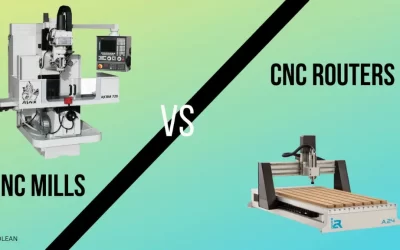
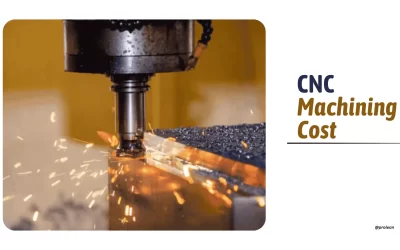
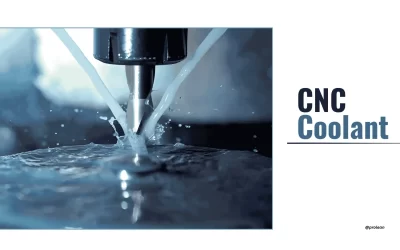
Here comes the article also! two months back we ordered some molds and I can see the crafts are reflected in your article.Thank You!
Great article! I never realized how crucial jig boring is for achieving ultra-precise tolerances in complex parts.